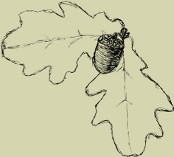42 41 40 39 38 37 36 35 34 33 32 31 30 29 28 27 26 25 24 23 22 21 20 19 18 17 16 15 14 13 12 11 10 9 8 7 6 5 4 3 2 1
Zeszyt 3 (1961)
From pine wood decomposed by the activity of fungi Merulius lacrymans and Poria vaporaria lignin was isolated in mild conditions. The isolated material was called a “biochemical lignin”. This lignin was subjected to variable hydrolyzing factors. Pine wood, biochemical lignin and hydrolyzed lignin were oxidized in alkaline medium, and the amount of pentacarboxylic acid, which indicates to the benzenoid structure of lignin nucleus formed as the effect of nuclear condensation, was determined, It was found that nuclear condensation was already initiated in wood decomposed by fungi. Biochemical lignin was also subjected to cooking in conditions of pulping for cellulose manufacture. Insolubility of this lignin was stated — as a result of changes which occurred in wood decomposed by fungi.
Up to now performed investigations concerned with deformation of wood subjected to conditions of simultaneous moistening and loading, were not taking into consideration the effect of temperature. In practice, however, in some instances the simultaneous effect f external forces, water, and various temperatures is to be considered. Very ofter wood is in contact with fluids of different temperature as for instance in cold stores, fermentation and tannery vats, how water and hot solutions reservoirs in chemical industry and so on. If such wood is performing the role of constructional element and is under the influence of permanent loading, it is subject to strains not only resulting from creep caused by long-time loading, but also from moistening and higher temperatures.
This work was aimed at better understanding of these phenomena occurring in the conditions of simultaneous effects of water at various temperatures, and different compression forces on dry wood. Investigations performed included the problems of moisture content changes, swelling pressure, and swelling of wood moistened under different conditions.
The results obtained can be summarized in the following conclusions:
— the moistening rate of dry wood is increasing with the increase of water temperature,
— the problem of swelling pressure in wood moistened under dry conditions,
— the problem of swelling of wood moistened under different conditions.
Investigations performed comprised:
1. determination of tree age effect on the yield of oil derived from fir needles,
2. examination of physico-chemical properties of oil and determination of its chemical composition.
As it is evident from table 14, the yield of oil is affected not only by the age of forest stand and side exposition but also by means of preparing raw material for distillation. The degree of grinding plant material is affecting not only the yield of oil but also the utilization of apparatus capacity.
Examination of the chemical composition of oil showed that its main constituents are: 1-α pinene — about 40%, 1-limone — about 36%, bornyl acetate — about 12%, santen — about 1.5%, traces of 1-β phellandrene, aldehydes of higher fatty acids — about 1.3%, traces of α-termineol, insignificant amount of acids, and approximately about 4% of sesquiterpenes.
This work was aimed at the improvement of organoleptic properties of fir oil by using the following physical and chemical methods:
1. distillation of the oil,
2. purification of the oil with inorganic compounds,
3. concentration of the oil,
4. deterpenation of the oil by extraction with organic solvents,
5. acetylation.
Separation of low-boiling fractions of oil by means of distillation produced no improvement in fragrance.
Experiments indicated that a substantial improvement of fragrancy can by achieved by washing the oil with 5 to 10% soda solution.
Purifying oil with soda solutions is more efficient, as far as fragrancy is concerned, than a secondary distillation (used up to now in the industry).
The concentration of the oil was performed by distillation both under vacuum and normal pressure. Organoleptic tests showed that best results were obtained by when 75% of terpenes were distilled from oil, which corresponds to concentration degree 4. Somewhat better fragrance properties were obtained when concentration process was performed under vacuum. In deterpening process 70% acetic acid and 70% ethyl alcohol was used. The best yield of terpenless oil was obtained by processing oil of concentration degree 4, and was about 8% in terms of natural oil.
Acetylation of fir oil was performed with acetic acid anhydride in cold and hot process. Better results were obtained when hot process was used.
Acetylation of oil of concentration degree 4, produced the increase of ester number from 126.7 to 147.4.















 Pobierz PDF
Pobierz PDF